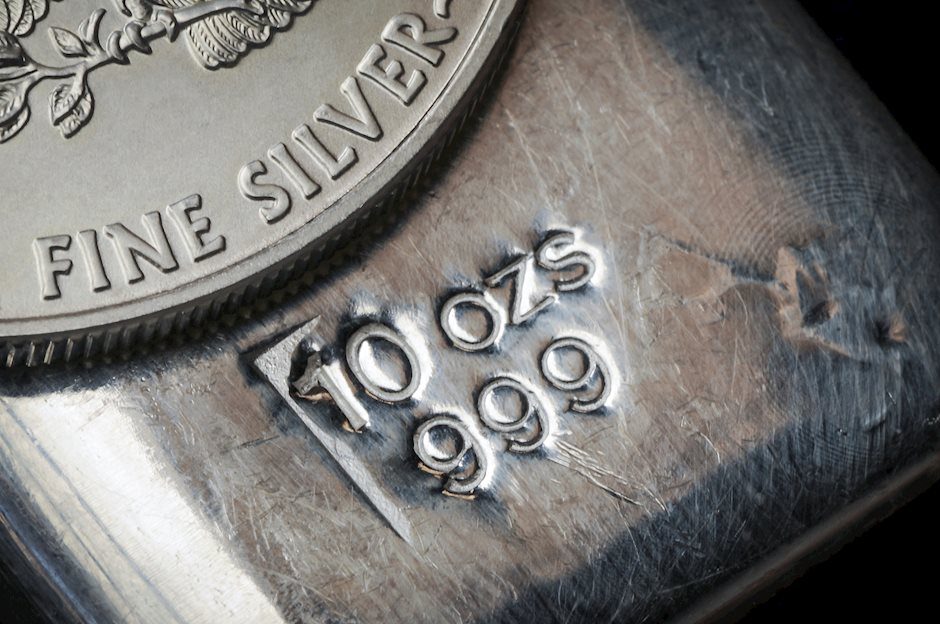Asset managers, industry aggressively snap up Silver

Welcome to this week's Market Wrap Podcast, I'm Mike Gleason.
Well, after months of political melodrama, Congress finally did what it was always does in the end – and that is to authorize more deficit spending. On Thursday night, the U.S. Senate approved the deal hashed out by Joe Biden and Kevin McCarthy to raise the debt ceiling through 2024.
Holders of Treasury securities may feel like breathing a sigh of relief knowing that the government won't default. But bondholders continue to subject themselves to interest rate risk and inflation risk.
Now that the U.S. Treasury has essentially unlimited borrowing authority again, there's a very good chance that it will be used to the detriment of the Federal Reserve note dollar's purchasing power.
Sound money observers, along with many others, were not surprised with this outcome of the debt ceiling controversy. Meaningful fiscal restraint is unfeasible without gold in the system.
Since Nixon defaulted on the Bretton Woods Agreement in 1971, there has been no governor on money creation and debt monetization. The Fed will always finance deficits and enable politicians' big government spending.
Therefore, a default on the value of the currency unit will continue over the medium to long term, with those who can least afford it bearing the brunt of the financial pain – such as savers, wage earners, and those on fixed income – mostly those without tangible assets to hedge against the currency debasement.
Meanwhile, the U.S. Dollar Index had staged a bit of a rally over the past few weeks as the Biden administration and the mainstream media played up the threat of the government possibly having to find a way to operate within a $31.4 trillion credit limit.
Now that Uncle Sam's credit line has been raised, more trillions will be borrowed into existence. That reality could prompt currency traders to resume selling U.S. dollars – and investors who seek protection from currency debasement to buy precious metals.
The gold market rallied to just shy of the $2,000 level on Thursday. As of this Friday recording, the monetary metal is giving back a chunk of the week's gains however and currently checks in at $1,965 an ounce, good for a gain of 0.5% now on the week.
Turning to the white metals, silver is up 1.5% this week to bring spot prices to $23.90 per ounce. Platinum is down 2.8% on the week to trade at $1,015. And finally, palladium is lagging with a 2.3% decline since last Friday's close to come in at $1,453 per ounce.
Industrial metals including the white metals and copper have shown price weakness in recent months. But that is likely to be temporary. They each face large and growing supply deficits amid rising demand and flat mining output.
The Biden administration is aggressively pushing a "green" energy agenda that includes mandating automakers switch their entire lineup of passenger vehicles from gasoline to electric motors. But doing so will require a massive quantity of strategic metals, including silver.
Silver is vital as a conductor in the electronic components that go into all vehicles. But it is needed in much larger quantities in EVs.
In a recent interview, First Majestic CEO Keith Neumeyer outlined the tremendous strain that could soon be placed on available silver supplies.
Keith Neumeyer: On the demand side, it's pretty phenomenal. Two industries, solar panels, about 160 million ounces. Automobiles about 80 million ounces. So it's like 250 million ounces between those two industries, which didn't exist a decade ago for really any large degree. Consuming almost 30% of the entire mine supply of silver. Governments want to eliminate all fuel cars by what? 2030? 2035, 2040 some say. The automotive sector can't produce the amount of electric cars required to replace all the fuel combustion cars over that period of time. And if we're producing as a global industry, the automotive industry… producing, call it 9 million electric cars last year, consuming 60 million ounces of silver, you do the math. In an 850 million ounce market, and the automotive sector needs to be producing 50 million cars a year over 20 years just replace the current fleet. So, you multiply those numbers out and you basically have no silver left.
Of course, in addition to being an indispensable metal in high-tech applications, silver is also historically a form of money. It's generally not held in monetary reserves by central banks like gold is. But is held by individual investors who seek to hold sound money in their reserves.
Silver bullion demand by individuals has been quite strong over the past couple years. And there are signs that silver may be catching on at the institutional level as money managers eye alternative assets with big upside potential.
BlackRock, the world's largest asset manager, disclosed in a regulatory filing in March that it had purchased a 10.9% stake in an exchange-traded silver instrument.
Despite this, institutional investment in precious metals currently averages under 0.5%. Meanwhile, the combined paper asset holdings of the top five investment firms are over $30 trillion. A tiny percentage increase in their allocation to hard assets would have an enormous impact on already tight physical gold and silver markets.
To receive free commentary and analysis on the gold and silver markets, click here to be added to the Money Metals news service.
Author

Mike Gleason
Money Metals Exchange
Mike Gleason is a Director with Money Metals Exchange, a national precious metals dealer with over 500,000 customers.

















